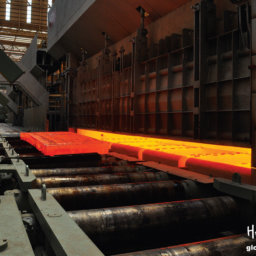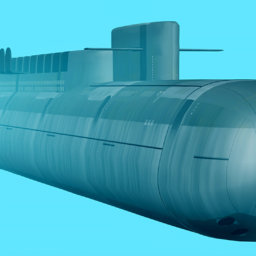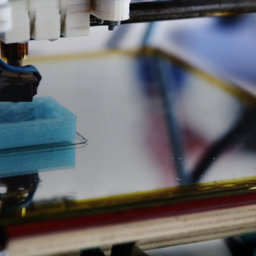Magnesium is one of the most abundant resources on earth, commonly found in seawater and the earth’s crust. It is a key element for life, needed for photosynthesis in plants and for hundreds of enzymes in animals. But in the natural world, the shiny gray metal exists only in combination with other elements such as carbon or oxygen and is difficult to extract in its purest form.

Magnesium was first purified in the 19th century, but wasn’t widely utilized until much later due to the metal’s flammability and corrosive nature, and its difficult refinement process. In its early days, scientists took advantage of its bright white combustibility to make military star shells for illuminating battlefields and flash effects for photography.
Despite its highly flammable nature, though, magnesium has turned out to be very useful for making alloys with other metals. These compounds are able to retain magnesium’s light weight but also offer greater strength and resistance to corrosion. These days, the biggest uses of magnesium are in aluminum alloys (which accounts for nearly one-third of all magnesium demand), die castings, titanium refining and steel desulphurization.
Magnesium in Electronics
When it comes to IT gadgets that require portability and durability, magnesium alloys can help minimize mass while maintaining sturdiness. Increasingly more plastic parts in electronic devices are being replaced by magnesium alloys that essentially weigh the same, but are much stronger and durable. This is especially useful for appliances that benefit from weight reduction, such as cameras, cell phones, laptops and other small electronics.

For example, POSCO’s carbon and magnesium alloy was used throughout the body of the LG Gram 15 laptop, successfully contributing to making it the lightest 15-inch laptop in the market. It was widely recognized for its high level of durability, despite its light weight.
Magnesium in the Automobile Industry
Magnesium wasn’t a very widely used element in the automobile industry in the past, avoided by engineers and designers because of its combustibility. But modern advancements have made magnesium safer than ever, allowing manufacturers to embrace it for its potential to increase fuel efficiency by reducing the vehicle weight. In fact, lightweight car body materials that use magnesium are often preferred over their heavier steel and aluminum counterparts.

Magnesium alloys are most commonly used for the chassis, in the interior (like for the seat base, console bracket and instrument panel), for the exterior (roof and frame, outside mirror armature and wheel frame) and for the powertrain. Magnesium alloys can also help reduce noise and vibrations compared to typical metals.

When the new hybrid car Renault EOLAB made its debut in 2014, its fuel efficiency was rated one of the best in the industry, able to run 100 kilometers on a liter of gas. The vehicle’s roof was made out of POSCO’s magnesium alloy, which decreased the total roof weight by more than half of the original. The magnesium alloy has also been used in the roof of the Porsche 911 GT3 RS, contributing to its light weight and better fuel efficiency.
POSCO continues to look for various ways to improve fuel efficiency in cars by developing technologies that can safely utilize magnesium alloys for the automobile industry.
POSCO and Magnesium
With the rise in demand for sustainable, recyclable and lightweight products, magnesium is proving to be the ideal material to utilize in more ways than one. POSCO has been at the forefront of developing magnesium sheet technologies, continually conducting research and looking to make advancements. Since last year, POSCO has emphasized minimizing costs and further developing magnesium materials. Currently, the company is involved in many solution marketing activities such as creating magnesium car parts.










